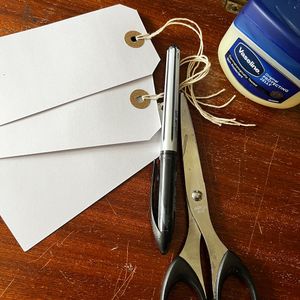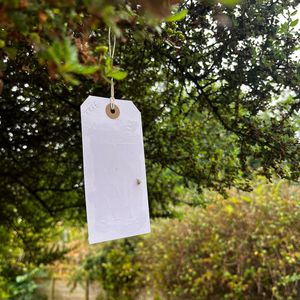The air we breathe is made up of many different gases, including oxygen, nitrogen, and carbon dioxide. But sometimes, harmful pollutants like smoke, dust, and chemicals can also be present in the air.
These pollutants can come from sources like cars, factories, and burning of fossil fuels. Breathing in polluted air can cause health problems like asthma, allergies, and even heart disease.
That's why it's important to keep our air clean and free from harmful pollutants, so we can all breathe easier and stay healthy.
Breathing air is vital to our existence, but have you ever thought you might not be breathing purely clean air? This simple experiment will help you determine the amount of foreign particles in the air in a specific area and give you an idea of how “dirty” your air is.
Make your own Air Pollution catcher

What you need
- Paper card
- Scissors
- Vaseline
- String
- Magnifying glass or microscope
- Permanent black marker
- Things to note down your findings
Time to do it
- A week
How to do it!
Find an area in which you can hang the paper cards. You can do this in your home if you’d like to find out how clean the air in your home is, or you can hang one outside in your garden. It also helps to try placing one in a busier area than the other.
Carefully poke (with a pen) or punch a hole in the card and pull the string through the hole. Make sure the string is long enough for where you plan to hang it. You could use something like luggage lables which already have string attached.
Important Note
Adult assistance/supervision is highly recommended when cutting and punching holes into the paper plate or cardstock paper, as well as hanging the pollution catchers in high places so they are not disturbed.
Write on each card the date and location you plan to hang your catcher. It helps identify the site after taking them down to study them.
Carefully apply a thin coat of petroleum jelly to one side of each card.
Hang the cards in different places within the areas you’ve chosen in step 1. Record the date and areas you’ve hung each one in the observation journal.

What did you find?
You will most likely find some amount of particles stuck to the pollution catcher.
Are there a lot of particles or just a few?
How do you think the area you’ve chosen to perform the experiment in has affected your results? What do you think would happen if you performed this experiment in a heavily polluted area, such as a big city or an area with known air pollution? Do you think you would find more particles stuck to the pollution catcher?
How do you think the particles in the air affect the air quality and our ability to breathe well?
